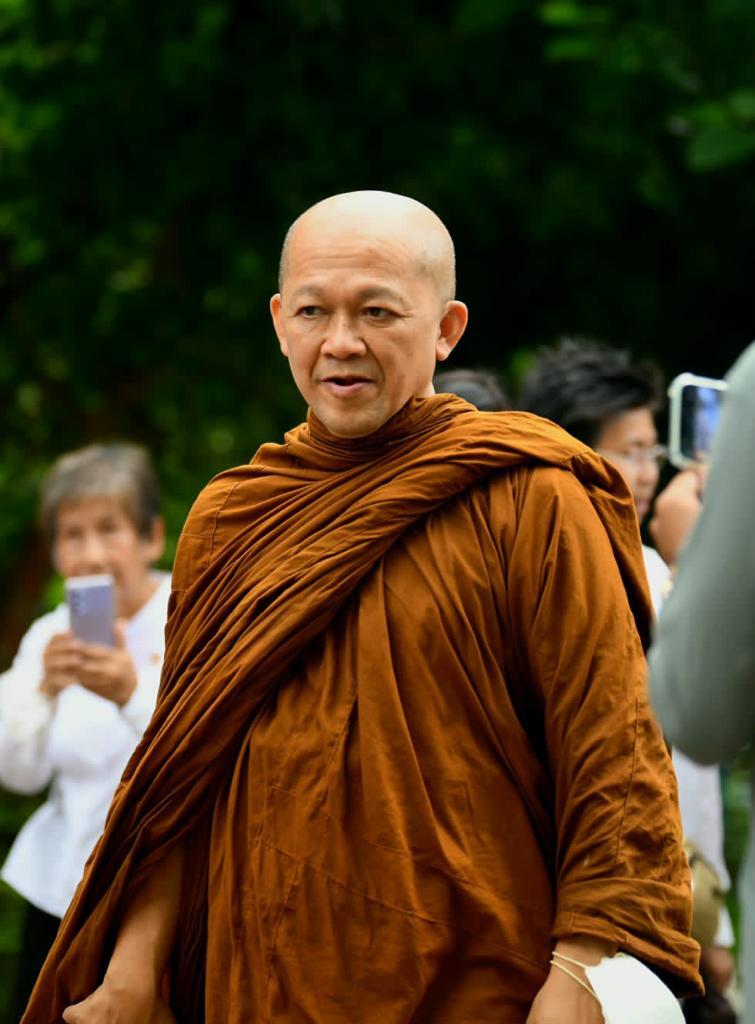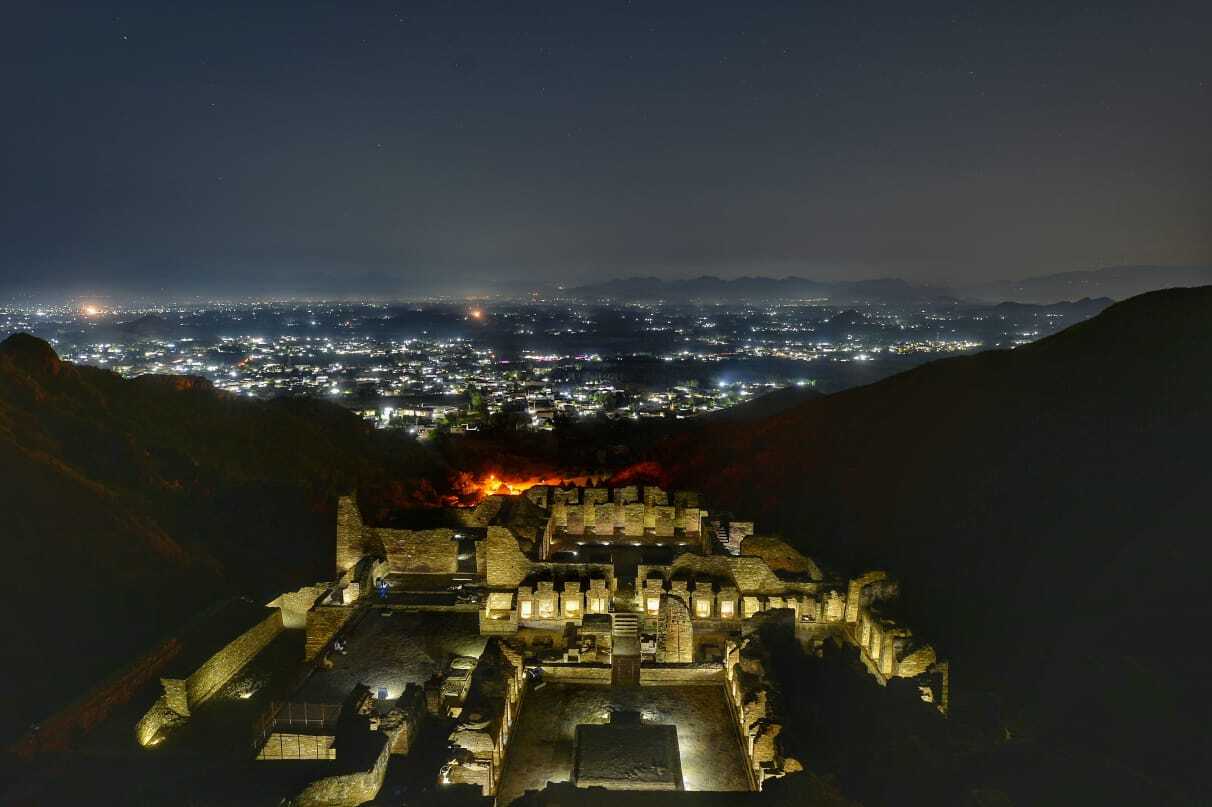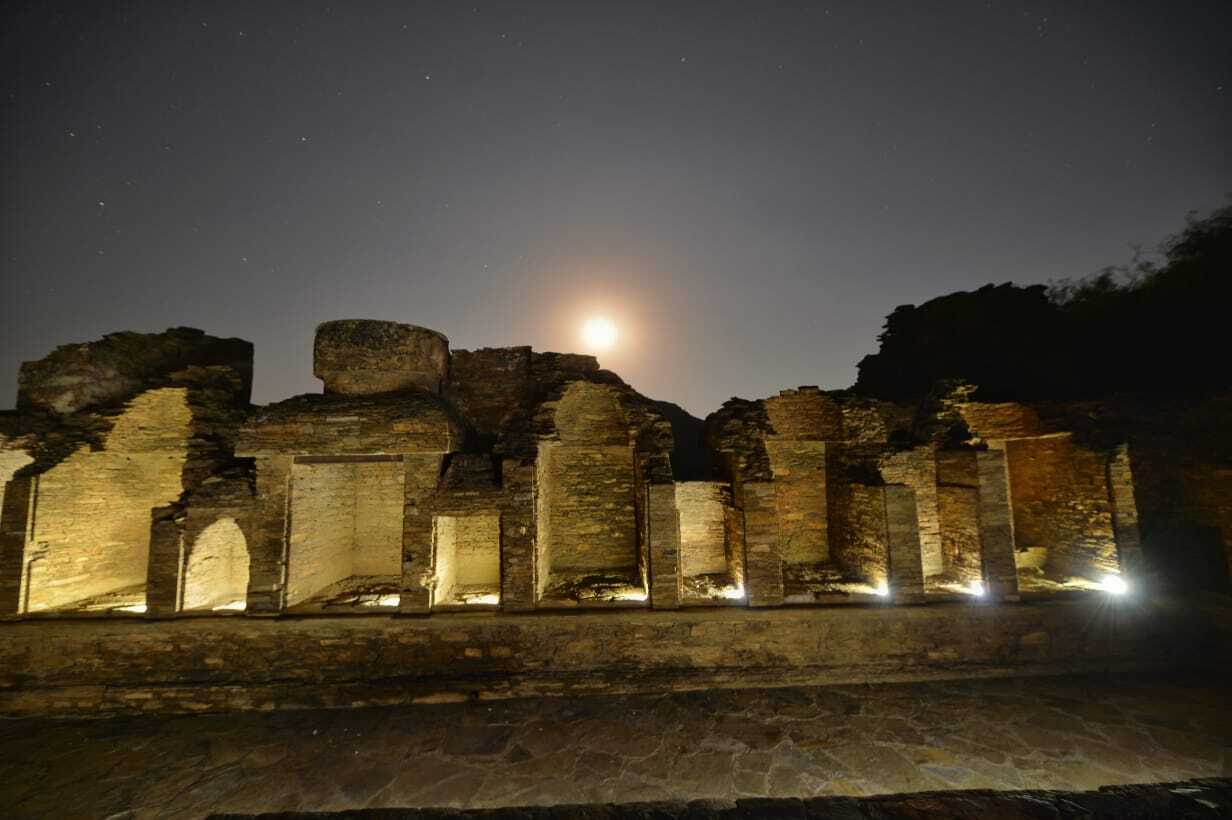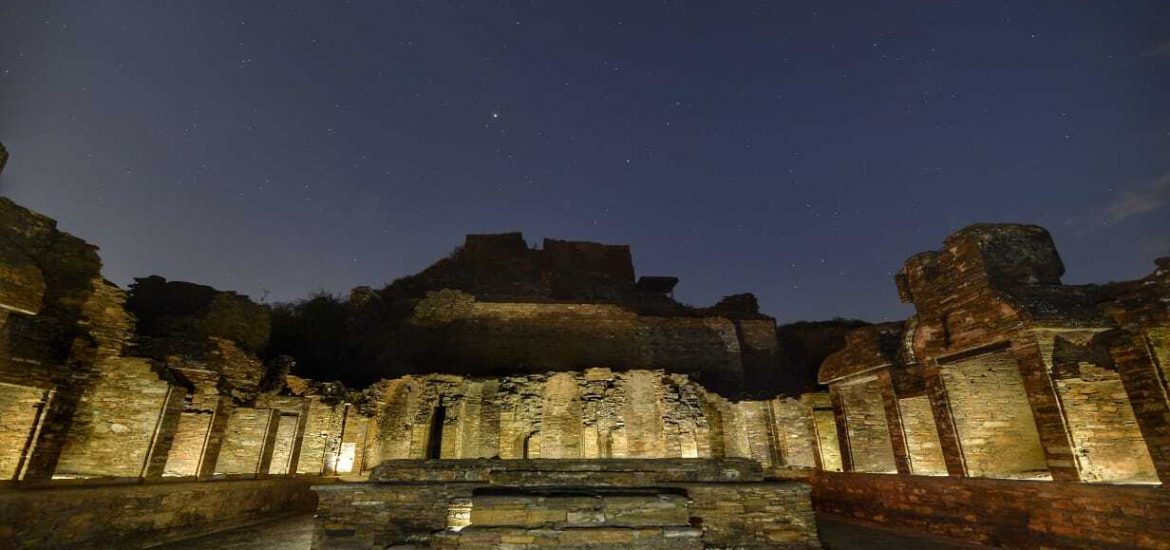The sanctum of ancient Buddhism, deep in the heart of Pakistan, lives. The aptly named Takht-i-Bahi, translated as “Throne of Origins,” is among the oldest Buddhist monasteries in the world. The complex stands on several scenic hills in the province of Khyber Pakhtunkhwa, which was a flourishing Buddhist region thousands of years ago. Built in the 1st Century of the Common Era, it remained in use until the 7th Century, which roughly coincides with the decline of the Gandharan civilization in the 6th Century (although Takht-i-Bahi was only part of the great Gandharan cultural complex across South and Central Asia).
While Takht-i-Bahi may no longer be the center of any living Buddhist tradition nowadays, it remains a popular tourist destination, a goldmine for archaeologists around the world, and a pilgrimage spot as much as Vulture Peak in India is. As recently as October, Thai monk Ven. Aryawangso, a senior member of Thailand’s Supreme Sangha Council, led a 150-strong delegation to chant and pray at the Throne of Origins.

As we reported in 2018, Ven. Arayawangso is unique for his understanding of Islam and sympathetic attitude toward interfaith dialogue, making him an important figure in mediating conflict in southern Thailand, where there remain tensions between Buddhists and Muslims. It is perhaps not a surprise that he recognizes the significance of Takht-i-Bahi to Buddhism globally. I would say that the temple represents not only the oldest continuous presence of Buddhist practice, but also the oldest practice that could be identifiably called pre-sectarian, reaching all the way to the foggy mists of history in the centuries between the Buddha’s death and the rise of tantric Buddhism on the Indian subcontinent.
In this video passed on to me by Ali Arshad Khan PhD, project director of the Digital Heritage Center of Khyber Pakhtunkhwa’s Directorate of Archaeology and Museums (KPDOAM), the institute’s drone has captured Ven. Aryawangso’s delegation paying homage to the Three Treasures on the grounds of this ancient site. Their chanting is a direct echo of the monastic communities that would have come up here in the first half of the Common Era and beyond, circumambulating the court of the main stupa, performing rituals in the monastic quadrangle and sitting in the meditation cells, and tending to the passageways and votive stupas.
This is not the first time he has come here, or that Buddhists from other places have appreciated the centrality of Takht-i-Bahi and its environs. In fact, he had made a visit here in 2019, with a smaller delegation, and in 2018. In the same year, a delegation composed of research institutes from China and Singapore, came to visit Takht-i-Bahi and the Peshawar Museum’s collections of Buddhist art. KPDOAM’s Twitter account also regularly Tweets photos and other media of visits to Khyber-Pakhtunkhwa. Recent tours include those by archeologists from Malaysia and China, Australian High Commissioner to Pakistan Neil Hawkins, and English cricketers and their families.
There is inevitably debate about whether the Throne of Origins was first built by Sarvastivadins or Mahasanghikas. I think it safer to attribute its construction to that fabled period of pre-sectarian Buddhism, before splits in interpretations of the Vinaya – ostensibly about monastic lifestyles and proscriptions for ethical living rather than doctrinal creeds – led to schisms of the nature of enlightenment and associated concepts, like the sravakayana and the bodhisattvayana. Yet the completion of Takht-i-Bahi corresponds to the era of the earliest translation of the Aṣṭasāhasrikā-prajñāpāramitā sutra (Perfection of Wisdom Sutra in 8,000 Lines). The specific year is 179 CE, which is the date of Lokakshema’s translation of the scripture into Chinese in Luoyang. (Harrison 1998, 3)

However, in ancient times the date of translation did not equate to the date of authorship. So we can posit that by the time this earliest of scriptures found itself in Lokakshema’s hands while he was heading to Luoyang to serve the Chinese emperor, the scripture already had a Buddhist community that had endured before 179 CE, and which was deeply embedded in the philosophical debates in Indian courts about the nature of reality.
The mission that this community had embarked on was twofold but interconnected: to earn the honor of crowning the king through the Ashvamedha (a common practice throughout royal courts in ancient India), which could only be earned by winning philosophical debates with rival sects, and to attain knowledge of the ground of the cosmos, or that “that which is prior to thought itself” (purvacitta).

The nascent “Mahayana” communities (though it would be centuries before such groups referred to themselves as such) would have been exploring and articulating the ideas in the Aṣṭasāhasrikā-prajñāpāramitā sutra in the decades and centuries before the completion of the Throne of Origins. One of the earliest inscriptions at the site of Takht-i-Bahi mentions Gondophares (c. 19–c. 46), the first Indo-Parthian king. A monarch that had just established a new kingdom like Indo-Parthia would have likely attempted to replicate kingly rituals. He would very likely have sought out brahmins and Buddhist monks to hold court with him and debate the nature of the ultimate. If the latter won, he would establish temples like Takht-i-Bahi for them, and they would sit at his right hand for the Ashvamedha to legitimize his reign.
The holy ruins speak to us. The ancient Buddhism of yore burns. The eternal flame scorches the air.

This article was written in collaboration with the Digital Heritage Center of the Directorate of Archaeology and Museums, Khyber Pakhtunkhwa (KPDOAM)
References
THE PRATYUTPANNA SAMĀDHI SUTRA; THE ŚŪRAṄGAMA SAMĀDHI SUTRA. Translated by Paul Harrison and John R. McRae. 1998. BDK America, Inc. dBET. PDF Version © 2017
Joseph G. Walser. 2018. Genealogies of Mahāyāna Buddhism: Emptiness, Power and the question of Origin. Routledge
See more
Buddhist Ruins of Takht-i-Bahi and Neighbouring City Remains at Sahr-i-Bahlol (UNESCO)
Thai monks visit Buddhist heritage site in Haripur (Dawn)
Related news from BDG
Thai Buddhist Delegation Visits Heritage Sites in Pakistan
Chinese Delegation Visits Buddhist Sites in Pakistan’s Khyber-Pakhtunkhwa
Related features from BDG
Takht-i-Bahi: The Jewel of Pakistan’s Cultural Heritage


